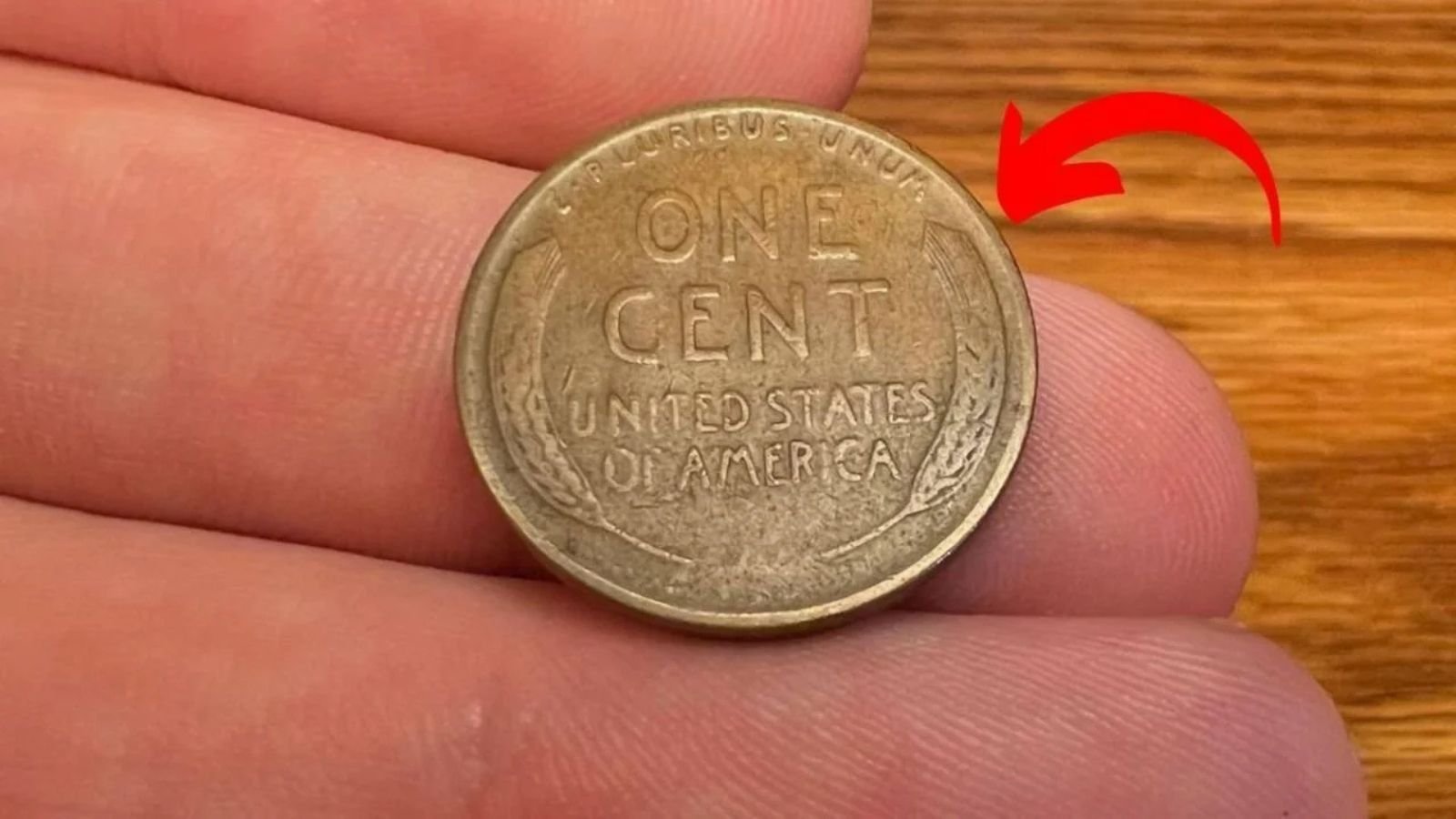Most people don’t think twice about the pennies they carry around in their pockets or wallets. These small copper coins often end up in jars, forgotten in drawers, or dropped into tip jars. However, among these seemingly ordinary coins, there exists one with extraordinary value—a Lincoln Wheat Penny that sold for an incredible $960,000. Yes, a one-cent coin that nearly reached the million-dollar mark.
While the average person sees pennies as minor change, coin collectors view them as treasures with the potential for massive returns. Especially the Lincoln Wheat Penny, which has proven time and time again to be one of the most collectible coins in American history.
Lincoln Wheat Penny: An Iconic American Coin
The Lincoln Wheat Penny was first introduced in 1909 to commemorate the 100th anniversary of Abraham Lincoln’s birth. It was revolutionary not only for honoring a real person, but also for representing a shift in American coin design. Victor David Brenner, the designer of the coin, included two simple wheat stalks on the reverse side to symbolize prosperity and the agricultural roots of the United States.
These pennies were minted until 1958. Over the course of its nearly five-decade run, the Lincoln Wheat Penny underwent several changes, variations, and even production mistakes—many of which led to the creation of some of the most valuable coins in U.S. history.
While most Lincoln Wheat Pennies are only worth a few cents to a few dollars, select rare versions—especially those with errors or limited minting—are worth thousands, or in some cases, close to a million dollars.
Why Some Lincoln Wheat Pennies Are Worth a Fortune
Not all Lincoln Wheat Pennies are created equal. There are several reasons why some of these coins command staggering prices in the collectibles market:
1. Low Mintage Numbers
Coins that were minted in low quantities are more rare by nature. Collectors always seek out coins that were produced in small numbers because they are harder to find, which increases their value over time.
2. Mint Errors
Coins that feature minting errors—like doubled inscriptions, missing mint marks, or incorrect planchets—often become highly valuable due to their uniqueness. These errors are often unintended by the U.S. Mint and are rare, making them highly collectible.
3. Specific Mint Marks
Certain mint marks, especially from locations where fewer coins were struck, are more desirable. For example, pennies minted in San Francisco (marked with an “S”) or Denver (“D”) often hold more value, particularly if they are tied to rare production years.
4. Historical Significance
The Lincoln Wheat Penny represents a tangible link to American history. Coins minted during significant historical periods (such as during World War I or World War II) can hold sentimental and historical value, increasing their worth.
5. Coin Condition
Coin grading plays a vital role in determining value. A Lincoln Wheat Penny in “Mint State” condition (which means it has never been circulated and shows no wear) will always be more valuable than one that has been in circulation for decades.
The $960,000 Lincoln Wheat Penny
Among all known variations, one Lincoln Wheat Penny achieved a legendary status by selling for an incredible $960,000. This coin was not just any regular wheat penny—it belonged to a rare subset of pennies with a minting error that occurred under very unusual circumstances.
During World War II, the U.S. Mint changed the composition of the penny from copper to steel in 1943 to save copper for the war effort. However, a few copper planchets accidentally made their way into the presses, resulting in 1943 copper Lincoln Wheat Pennies. Only a handful of these coins are known to exist today. One of them, in pristine condition, fetched the nearly million-dollar price tag.
This case is the perfect example of how a simple coin—if it’s the right coin—can hold life-changing value.
Rare and Valuable Lincoln Wheat Pennies to Look Out For
Here are some of the most notable Lincoln Wheat Penny variants that have caught the attention of collectors:
| Year | Mint Mark | Why It’s Valuable | Estimated Value |
|---|---|---|---|
| 1909-S | S (San Francisco) | First year of issue, low mintage | $1,000–$3,000 |
| 1909-S VDB | S | Initials of designer (VDB), very limited run | $5,000–$960,000 |
| 1914-D | D (Denver) | Rare due to low production | $200–$10,000+ |
| 1922 No D | No mint mark | Error coin, highly rare | $500–$50,000 |
| 1955 Double Die | No mint mark | Doubling on the date and lettering | $1,000–$100,000+ |
Where You Might Still Find a Rare Lincoln Wheat Penny
Believe it or not, rare Lincoln Wheat Pennies still show up in everyday places. You don’t necessarily have to be a professional collector or dig through ancient treasure chests to stumble upon one.
Many rare coins have been discovered in:
- Coin rolls from banks – People often overlook pennies, which means rare ones can easily slip through the system.
- Old jars or piggy banks – You’d be surprised how many people unknowingly store valuable coins in these.
- Inherited coin collections – A dusty old box passed down through the family might just contain a hidden gem.
- Change from cash transactions – Always check your change, especially when receiving older coins.
How to Tell If Your Lincoln Wheat Penny Is Valuable
If you suspect you have a rare Lincoln Wheat Penny, here are some quick steps to evaluate its potential worth:
1. Look at the Date and Mint Mark
The year and mint mark are your first clues. Certain years and locations had lower production numbers, which increases rarity.
2. Inspect for Errors
Check for doubling in the lettering or numbers, missing mint marks, or unusual features. These errors make the coin more valuable.
3. Evaluate the Condition
Mint condition coins are significantly more valuable than those with scratches or wear. Even slight imperfections can drastically affect the value.
4. Get a Professional Opinion
Take your coin to a local coin dealer or grading service. A professional evaluation can provide confirmation and possibly even certification of the coin’s grade.
Selling a Rare Lincoln Wheat Penny
If you find yourself in possession of a valuable Lincoln Wheat Penny, here’s what to do next:
- Have It Graded: Grading is a critical step in setting a baseline for value. Reputable grading companies can help establish your coin’s authenticity and condition.
- Consider Multiple Offers: Whether you approach coin dealers, attend coin shows, or engage in private sales, it’s wise to shop around before committing to a sale.
- Think About Auctions: Coins with high value often do well in auctions, where competitive bidding can drive prices much higher than expected.
- Secure Storage: Before selling, keep your coin in a protective case and store it in a safe, dry environment to prevent damage.
Final Thoughts: Check Your Change—It Could Be Worth Thousands
The story of the Lincoln Wheat Penny worth $960,000 is a reminder that hidden treasures sometimes come in the smallest packages. While most people see a penny as trivial, collectors understand its potential value, both historically and financially.
From bank rolls to pocket change, these coins continue to circulate in the wild, waiting to be discovered. Whether you’re an avid collector or someone simply curious about coins, checking your Lincoln Wheat Pennies might turn out to be the most profitable minute you ever spend.
So next time you receive change or stumble across an old coin jar, don’t ignore the pennies. That copper coin might just be your gateway to a hidden fortune.
Some Important Link
| Telegram Group | Click Here |
| WhatsApp Group | Click Here |
| Home Page | Click Here |















